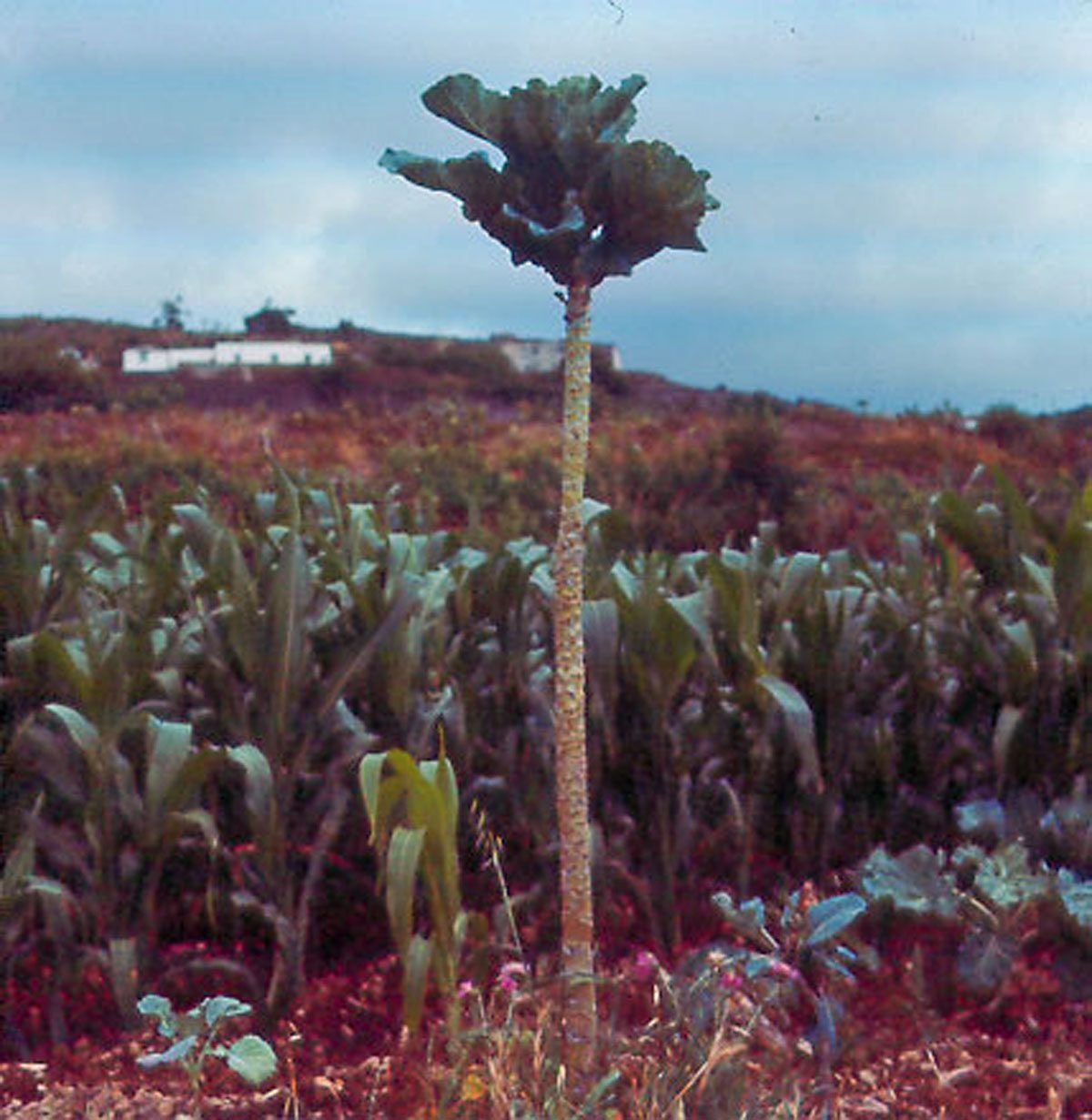What Is Walking Stick Cabbage: How To Grow Walking Stick Cabbage


When you mention to neighbors that you are growing walking stick cabbage, the most likely response will be: “What is walking stick cabbage?” Walking stick cabbage plants (Brassica oleracea var. longata) produce cabbage type leaves atop a long, sturdy stem. The stem can be dried, varnished, and used as a walking stick. Some call this vegetable “walking stick kale.” All agree that it is among the more unusual garden veggies. Read on for information about how to grow walking stick cabbage.
What is Walking Stick Cabbage?
Walking stick cabbage is not well known, but those gardeners who grow it, love it. It almost looks like a Dr. Seuss plant, with a very tall, sturdy stem, up to 18 feet (5.5 m.) high, topped by a fluff of cabbage/kale leaves. Native to the Channel Islands, it is an edible ornamental and will certainly attract attention in your garden. The plant grows faster than Jack’s beanstalk. Its stalk shoots up 10 feet (3 m.) in one season, producing enough leaves to keep you in vegetables for the season. It’s a short-lived perennial in USDA zones 7 or above, standing in your garden for two or three years. In cooler regions, it is grown as an annual.
How to Grow Walking Stick Cabbage
Walking stick cabbage plants are almost as easy to grow as regular cabbage or kale. Walking stick cabbage growing should occur in neutral soil, with a pH of between 6.5 and 7. The plant does not do well in acidic soils. The soil must have excellent drainage and should be amended with a few inches (8 cm.) of organic compost before planting. Start walking stick cabbage seeds indoors about five weeks before the last projected frost. Keep the containers on a windowsill in a room around 55 degrees F. (13 C.). After a month, transplant the young seedlings outdoors, allowing each plant at least 40 inches (102 cm.) of elbow room on each side. Walking stick cabbage growing requires weekly irrigation. Immediately after transplanting, give the young walking stick cabbage plants 2 inches (5 cm.) of water, then another 2 inches (5 cm.) per week during the growing season. Stake the plant as it starts to grow taller.
Can You Eat Walking Stick Cabbage?
Don’t be embarrassed to ask, “Can you eat walking stick cabbage?” It’s such an unusual looking plant it is hard to imagine it as a crop. The simple answer, though, is yes, you can harvest and eat the leaves of the plant. You are better off not attempting to eat the thick stem, however.
Gardening tips, videos, info and more delivered right to your inbox!
Sign up for the Gardening Know How newsletter today and receive a free copy of our e-book "How to Grow Delicious Tomatoes".

Teo Spengler is a master gardener and a docent at the San Francisco Botanical Garden, where she hosts public tours. She has studied horticulture and written about nature, trees, plants, and gardening for more than two decades. Her extended family includes some 30 houseplants and hundreds of outdoor plants, including 250 trees, which are her main passion. Spengler currently splits her life between San Francisco and the French Basque Country, though she was raised in Alaska, giving her experience of gardening in a range of climates.
-
 Looking For Plants To Give You The Soft And Fuzzies? Try These 5 Fuzzy Leaf Plant Options
Looking For Plants To Give You The Soft And Fuzzies? Try These 5 Fuzzy Leaf Plant OptionsLovers of texture, drama, silver foliage and tactile plants will adore these special sensory garden additions. These fuzzy leaf plant options will leave you all aglow
By Susan Albert
-
 Get Ready For A Summer Of Hummers! Grow These Full Sun Hummingbird Plants and Flowers
Get Ready For A Summer Of Hummers! Grow These Full Sun Hummingbird Plants and FlowersIf you’re lucky enough to enjoy a sunny backyard, make sure you are maxing out on your pollinator opportunities and grow these full sun hummingbird plants and flowers
By Tonya Barnett